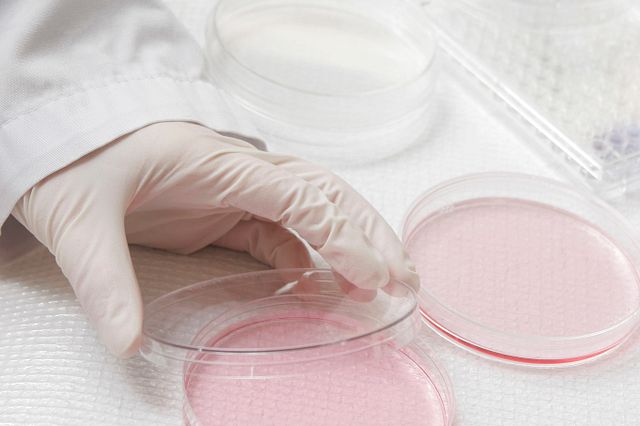ISO 10993-10 Irritation and Skin Sensitization Testing
The ISO 10993-10 standard is a critical component of biocompatibility testing, designed to assess the potential for dermal irritation and skin sensitization in medical devices and materials intended for use on human skin. This standard plays an essential role in ensuring that products meet regulatory requirements before they reach the market.
The test evaluates two primary endpoints: irritation and sensitization. Irritation refers to the localized adverse effects on the skin, while sensitization involves the induction of an allergic response upon re-exposure to the same material. These tests are particularly important for additive manufacturing (AM) applications in medical devices where materials must be safe and non-reactive.
The testing process typically involves exposing test subjects to the substance under investigation for a specified duration, followed by observation over time for signs of irritation or sensitization. The specimens used can range from simple solutions to complex composite materials produced through AM processes like stereolithography (SLA) or selective laser sintering (SLS).
Understanding the nuances of this testing is crucial for ensuring that medical devices and materials meet stringent regulatory standards. Regulatory bodies such as the US FDA, EU MDR, and other national authorities rely on these tests to ensure public safety.
| Parameter | Description |
|---|---|
| Irritation Endpoint | Detailed observation for signs of adverse effects such as erythema (redness), edema (swelling), and induration (hardening) on the skin. |
| Sensitization Endpoint | Assessment of whether repeated exposure to the test material results in an allergic reaction. |
| Test Duration | 28 days for irritation testing, and sensitization testing typically conducted over a 14-day period followed by a 14-day observation period. |
The ISO 10993-10 test is particularly relevant in the context of additive manufacturing due to the variety of materials used. AM technologies allow for the creation of complex geometries and structures that can be tailored to specific medical applications, but ensuring these materials are safe for prolonged contact with human skin is paramount.
The testing protocol is designed to provide a comprehensive understanding of how different materials interact with the skin, allowing manufacturers to make informed decisions about material selection. This information is invaluable in developing safer and more effective medical devices.
Scope and Methodology
The testing protocol involves exposing test subjects to the substance under investigation for a specified duration, followed by observation over time for signs of irritation or sensitization.
The specimens used can range from simple solutions to complex composite materials produced through AM processes like stereolithography (SLA) or selective laser sintering (SLS).
The test evaluates two primary endpoints: irritation and sensitization. Irritation refers to the localized adverse effects on the skin, while sensitization involves the induction of an allergic response upon re-exposure to the same material.
The protocol is designed to ensure that all relevant parameters are covered, providing a comprehensive understanding of how different materials interact with human skin. This approach ensures that medical devices and materials meet stringent regulatory standards.
| Parameter | Description |
|---|---|
| Irritation Endpoint | Detailed observation for signs of adverse effects such as erythema (redness), edema (swelling), and induration (hardening) on the skin. |
| Sensitization Endpoint | Assessment of whether repeated exposure to the test material results in an allergic reaction. |
| Test Duration | 28 days for irritation testing, and sensitization testing typically conducted over a 14-day period followed by a 14-day observation period. |
The ISO 10993-10 test is particularly relevant in the context of additive manufacturing due to the variety of materials used. AM technologies allow for the creation of complex geometries and structures that can be tailored to specific medical applications, but ensuring these materials are safe for prolonged contact with human skin is paramount.
Benefits
The ISO 10993-10 test brings numerous benefits to the development of medical devices and materials produced through additive manufacturing. By ensuring that products meet rigorous safety standards, this testing enhances consumer confidence in the efficacy and safety of these devices.
Enhanced Safety: Ensures that all materials used are non-toxic and do not cause adverse effects on human skin.
Regulatory Compliance: Provides evidence of compliance with international regulatory standards, facilitating market entry.
Informed Decision-Making: Offers detailed insights into the interaction between different materials and human skin, aiding in material selection.
The test also supports innovation by providing a framework for assessing new materials and technologies. This ensures that medical devices are not only safe but also effective and reliable. By incorporating ISO 10993-10 testing into the development process, manufacturers can reduce risks associated with product failure or adverse events.
Environmental and Sustainability Contributions
The ISO 10993-10 test contributes to environmental sustainability by ensuring that medical devices and materials are safe for human use. This, in turn, reduces the likelihood of product recalls and associated waste generation.
Eco-friendly Products: By promoting safer products, this testing helps reduce the environmental impact associated with the disposal of unsafe or ineffective medical devices.
Reduced Waste: Ensures that only safe and effective materials are brought to market, reducing the need for rework or replacement, which can lead to less waste.
The test also supports sustainable manufacturing practices by encouraging the use of safer materials. This not only benefits the environment but also promotes a healthier workforce, contributing to overall sustainability goals.





